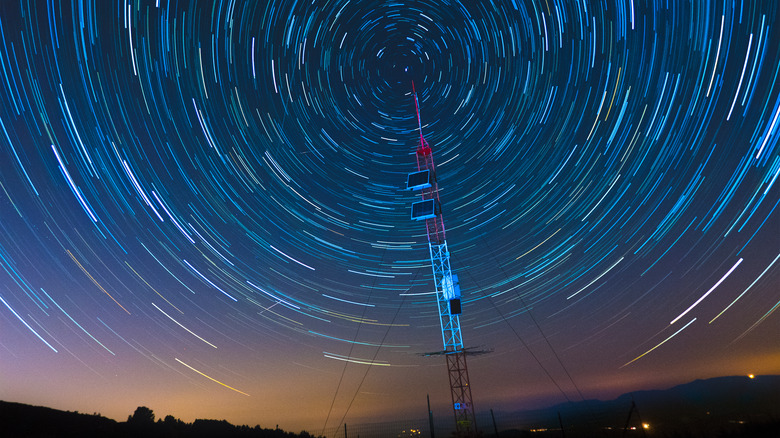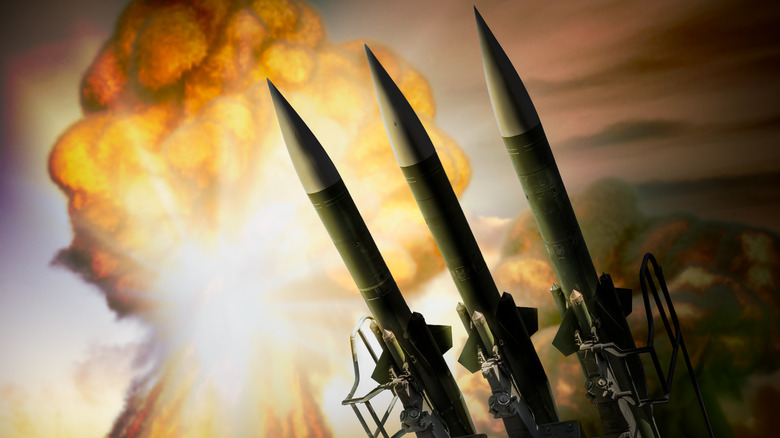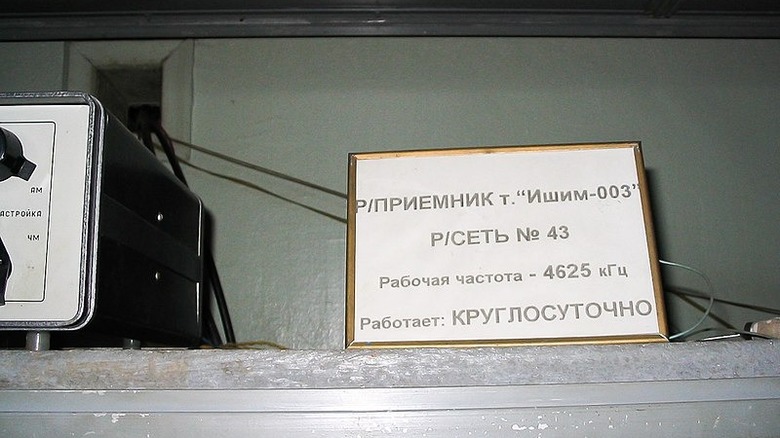The Buzzer: The Strange History Behind Russia's UVB-76
During the Cold War, numbers stations became prolific as high-security, low-risk spy tools to send secret messages to operatives in the field. However, as early as World War I, espionage agencies were using shortwave radio numbers stations to broadcast Morse-coded numbers that only meant something if someone else had the key to decipher the code.
But these numbers stations used more than just numbers to convey directives. Music, beeps, hums, a woman counting off numbers in German, a man listing Russian names, and even a child's voice repeating English letters began to creep eerily across the airwaves. Russia's UVB-76, also known as The Buzzer, is perhaps the most notorious of these numbers stations, and it's still broadcasting today.
The first encrypted messages are thought to have been used by Egyptians around 1900 BCE when they began arranging hieroglyphics differently to hide their meaning. Greeks used a cipher device called a scytale around 400 BCE to transmit secret military orders. In 100 BCE, Julius Caesar used a substitution cipher to send coded communiques to his generals.
While the art of scrambling messages has been going on for a long time, the science of cryptography has only existed for about 100 years. The word "cryptography" comes from the Greek "kryptós" (which means hidden) and "graphein" (to write), so it means hidden writing.
The earliest known recording of UVB-76 is from 1982, but it's been broadcasting at the 4625 kHz frequency since the late '70s and possibly earlier.
The infectious earworm that will haunt your dreams
For decades, what message UVB-76 was broadcasting nonstop, to whom it was trying to communicate, and from where it originated was anyone's guess. What has aired during that time has varied. From 1982, when the station was first recorded, to 1992, all The Buzzer ever seemed to transmit were beeps.
After '92, it changed to a series of buzzes (thus the nickname "The Buzzer") lasting about a second, followed by what can best be described as the foghorn of a ship. And if that wasn't creepy enough, a Russian man or woman could be heard listing off things like names, words, or numbers every few weeks.
Furthermore, the amplitude and pitch of the tones varied randomly, but precisely once an hour — like clockwork – UVB-76 would send out two quick buzzes. There didn't appear to be any rhyme or reason behind any of it, and according to one signal intelligence expert interviewed by the BBC, there was no information contained within any of the sounds being transmitted.
On June 5, 2010, UVB-76 stopped entirely, only to resume a day later. It was the first time it had stopped broadcasting for any amount of time since it was first "discovered" decades earlier. For the following several weeks, things went back to "normal." But in the middle of August, it suddenly stopped and restarted a few times before going entirely off the rails on August 25.
Nuclear Dead Hands on Swan Lake
After some initial silence, listeners heard something odd. Yes, more odd than the "typical" string of weird beeps and boops. What followed sounded like people shuffling around and moving things inside a small room. The station's broadcast was intermittent for the next week or two, and bits of music from Tchaikovsky's "Swan Lake" could be heard.
Then, at 8:48 pm Moscow time on September 7, 2010, a male voice was heard issuing a new call sign — "Mikhail Dmitri Zhenya Boris," interpreted by listeners as MDZhB. The voice continued with "04 979 D-R-E-N-D-O-U-T," more random numbers, the letters "T-R-E-N-E-R-S-K-I-Y" followed by more numbers.
Several theories existed about what UVB-76, now using the name MDZhB, was: a conclave of radio pirates simply pranking the world, a way to communicate with submarines, a numbers station conveying orders to sleeper agents, or maybe it was an old Russian military "Dead Hand –" a system designed to observe military frequencies and measure everything from radiation levels to changes in the ionosphere. Should a nuclear war break out and annihilate the Soviet Union, it could automatically launch a nuclear counterstrike without human intervention.
Before the switch from UVB-76 to MDZhB in 2010, efforts to triangulate the radio signal placed it at a Russian military base outside a small town called Povarovo, only 19 miles from Moscow. Thus, the Dead Hand theory seemed reasonable. But after the name changed, so did the location of the signal.
Nothing creepy about a dog guarding an abandoned military base
About a year after the name switch, urban explorers gathered the courage to investigate and found the military base abandoned. Aside from deserted buildings filled with "useless" and mostly "broken" equipment, they found a healthy guard dog still chained to a nearby tree.
They also found a log book detailing all the broadcasts sent from the station between October 3, 2005, and December 7, 2005. One entry (on page 8) from October 4, read at 18:30, a "guard dog has put on place on post 173". Interviews with locals still living in Povarovo said one night in 2010 after a dense fog had rolled in, the Russian military "quickly and efficiently evacuated" the station in less than 90 minutes.
The new station's location has since been more problematic to pinpoint. Some triangulation efforts put it in the small town of Kirsino (with just 39 people), others in the Pskov Oblast close to the border of Estonia. Still, others believe the station is broadcasting from two completely different locations.
Amidst swampy peat bogs and grass marshlands of Leningrad sits the alleged first location, a transmission site with over 30 antennas known as Kerro Massiv that belongs to Russia's 60th communication hub. It's believed to be merely a relay station, and the actual broadcasts come from within St. Petersburg. The second suspected location is called Naro Fominsk, in Moscow, and is said to be part of Russia's 69th communication hub.
This channel is reserved for spies and the Russian military
Then, on January 24, 2013, the words "OBYaVLENIYA KOMANDA 135" ("COMMAND 135 ISSUED" in English) were heard. According to the BBC, this test order was sent to Russia's military (and perhaps spy networks) that'd be issued if the country befell a disaster or was invaded.
The likeliest explanation is that UVB-76/MDZhB isn't anything nefarious but a simple way for the military to communicate with its units spread out across a vast expanse. With a total area of 6,601,665 square miles, Russia comprises 11% of the globe.
In August 2011, a photo of a placard openly referring to the fabled 4625 kHz frequency appeared on Russia's Wikipedia. The author claimed it was inside an army registration and enlistment office. Yes, it could very well be a hoax. But what about all those odd beeps and boops? Many experts believe it's a channel marker, a cheap and easy way to keep that frequency occupied, a trick that should have prevented other people from using it.
Ironically, in January 2022, the station suddenly began broadcasting songs (i.e., Psy's hit "Gangnam Style") and other noise packets that displayed Internet memes if run through a spectrum analyzer. Hackers were credited with hijacking the 4625 kHz frequency for kicks. We assume they were sent to a gulag in Siberia because the station quickly resumed its regular brand of weird.
You can listen to a live feed of the station here.
[Image by Orlando Avare via Russia Wikipedia | Cropped and scaled | CC BY-SA 1.0]



